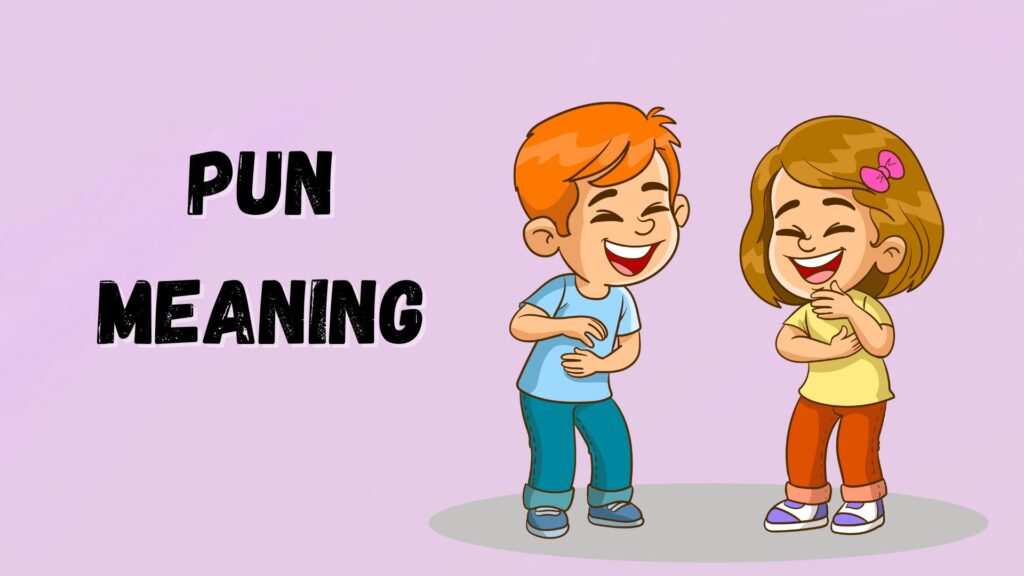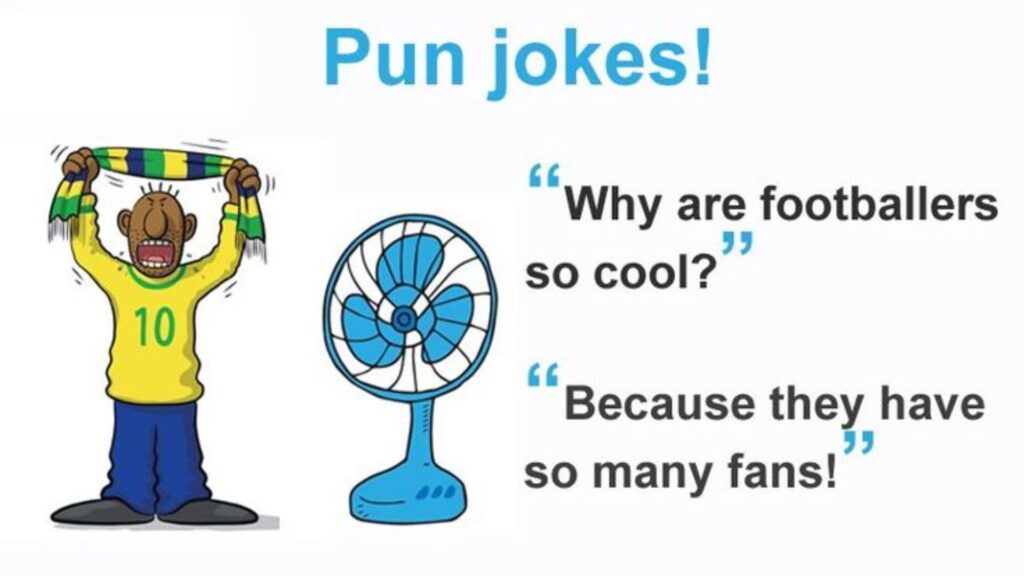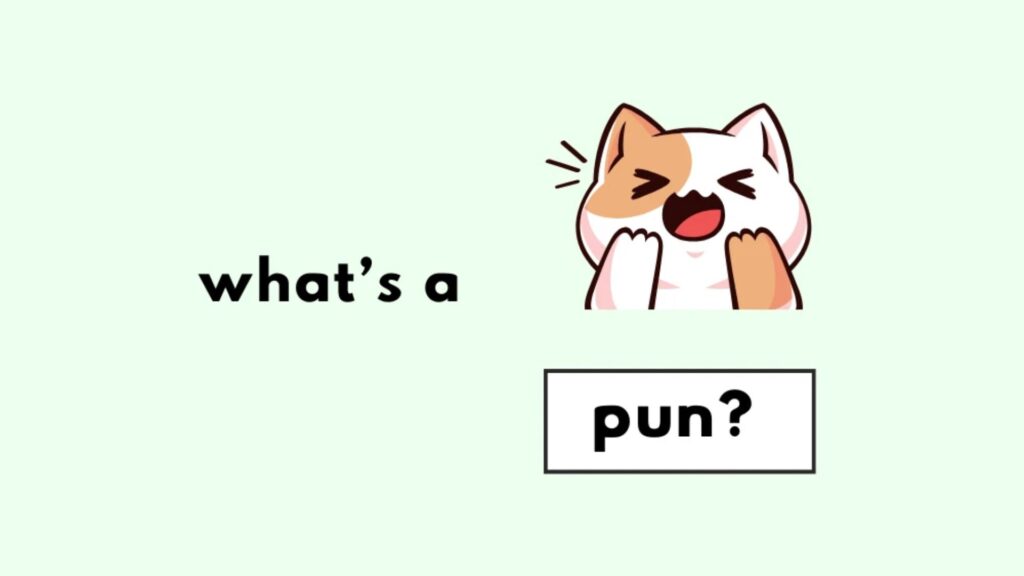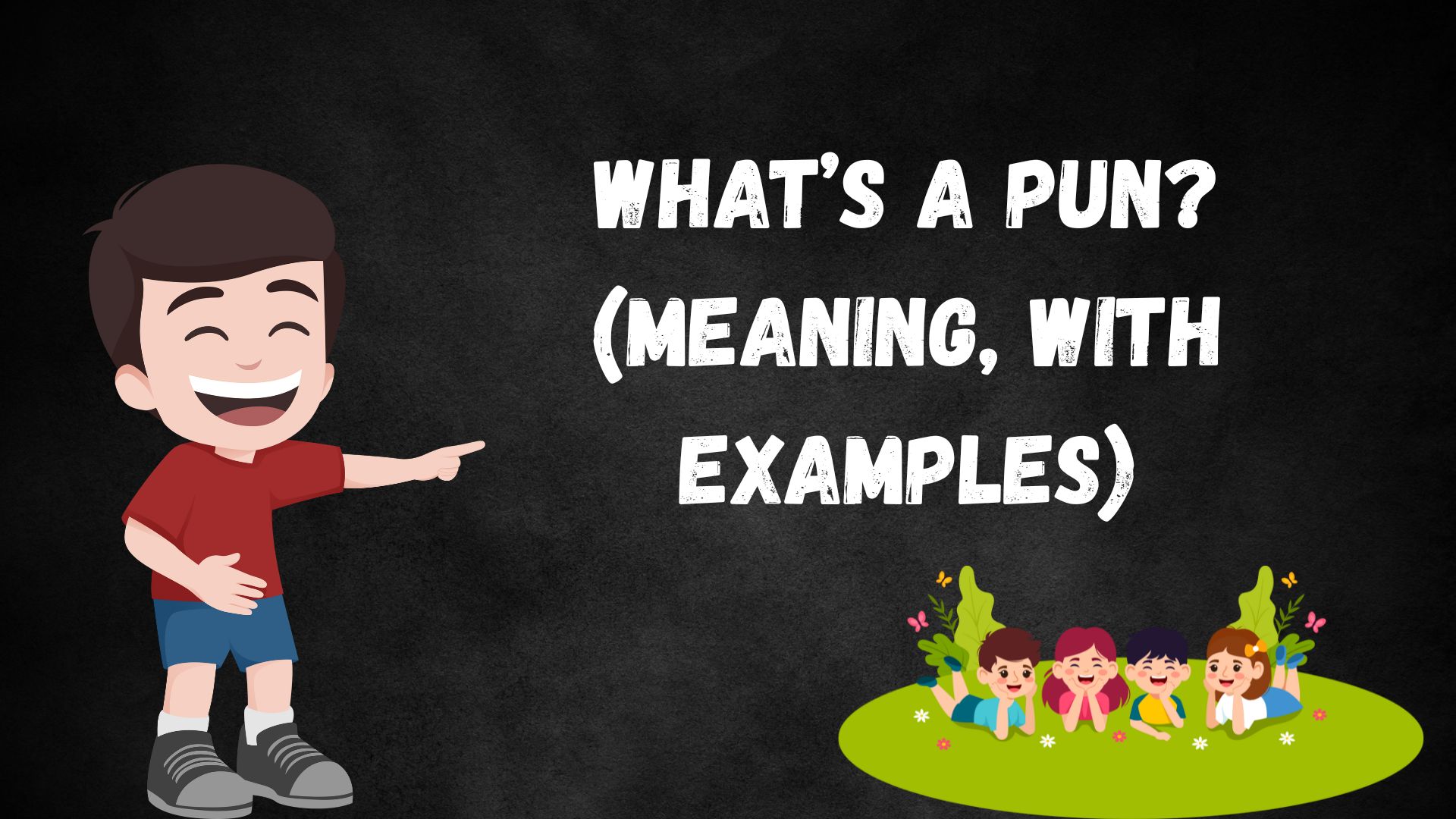Pun Meaning
Language has a sense of humor whether we realize it or not. And at the heart of that humor sits the pun. It’s clever, cheeky, and sometimes groan-worthy, but it’s a core part of how we play with words. So, what’s a pun and pun meaning exactly, and why do people enjoy them so much?
Let’s break it down, laugh a little, and learn how puns work in everyday English.
What Is a Pun?

Pun Meaning
A pun is a form of wordplay that uses multiple meanings of a word or similar sounding words to create a joke, a witty remark, or clever humor. In grammar terms, it’s built on lexical ambiguity when a word or phrase can be interpreted in more than one way.
Sometimes called paronomasia, a pun draws attention to the phonetic resemblance or spelling similarity between words. The result? A twist in meaning that creates a humorous or rhetorical effect.
Pun = Humor + Ambiguity + Clever Language Use
Types of Puns (with Examples)
Puns come in different styles depending on how the wordplay is constructed. Here are some of the most common types, along with real-life scenarios to show how they show up naturally.
1. Homophonic Puns
These puns rely on homophones words that sound the same but have different meanings or spellings.
Example:
“I used to be a banker, but I lost interest.”
The humor comes from “interest” referring both to bank interest and personal enthusiasm.
Scenario Example – Funny Out-of-Office Email:
Subject: Out of Office I’m Checking Out (Literally)
Hi Ilene,
I’m currently away from my desk. In fact, I’ve checked out so hard, even hotel staff would be impressed.
I’ll be back next week, hopefully with renewed interest in banking. Until then, please contact Marcus for urgent matters.
Cheers,
Tim
2. Homographic Puns
These puns play on words spelled the same but with different meanings or pronunciations.
Example:
“Time flies like an arrow. Fruit flies like a banana.”
In the first half, “flies” is a verb. In the second, it’s a noun. That clever twist is what makes this a homographic pun.
3. Compound Puns
This is when more than one pun is stacked together think of it like a “pun sandwich.”
Example:
“A man stole a calendar. He got twelve months.”
You get the joke? Twelve months could mean a year in jail or just a normal calendar.
Scenario Example – Slack Message at Work:
Hey team,
In case you’re wondering who snagged the new office calendar it wasn’t me. I don’t want to do time for stealing time. 😄
Cheers,
Alicia
4. Visual or Typographic Puns
These rely on how words look, not just how they sound. They’re more common in advertising or memes, where fonts, images, or spelling help deliver the joke.
Example: A t-shirt with a picture of a cat that says:
“I’m feline fine.”
This pun uses the sound of “feeling fine” and swaps it with feline, the family of cats.
Why Do We Use Puns?

Pun Meaning and it’s uses will be discussed
Puns serve multiple functions:
- They make language more playful
- They demonstrate cleverness or wit
- They help lighten serious topics
- They make memorable headlines, ads, and social posts
Plus, they’re used across different fields from literature to marketing to everyday conversation.
Puns in Literature and Pop Culture
Authors have long leaned on puns to craft witty dialogue or subtle jokes. William Shakespeare was famously fond of them.
Example from Romeo and Juliet:
“Ask for me tomorrow, and you shall find me a grave man.”
Mercutio uses “grave” to mean both serious and dead. That’s a classic double entendre a pun that offers two meanings, often with one being humorous or suggestive.
Puns in the Workplace
Yes, even the office isn’t safe. Puns often sneak into work emails, newsletters, and team chats. They break the ice and make communication feel less robotic.
Scenario Example – Office Newsletter:
📰 HR HEADLINES
- We’re on a roll with onboarding (welcome to our newest batch of employees!)
- Donut Day is this Friday don’t glaze over the invite!
- New legal intern Ilene has joined the firm. We’re hoping she doesn’t bring any lawsuits… just good suits.
Puns in Branding & Advertising
Marketers know puns stick. That’s why so many brand slogans lean into verbal humor and phonetic jokes.
Examples:
- A bike shop named “Wheelie Good Bikes”
- A seafood place called “The Codfather”
- A lawn care business using “Lettuce Mow Your Lawn”
Clever, right?
Common English Puns (and Why They Work)
Let’s break down a few popular ones:
| Pun | Explanation |
|---|---|
| “I used to be a baker, but I couldn’t make enough dough.” | “Dough” = money and bread. |
| “A boiled egg in the morning is hard to beat.” | “Hard to beat” = strong competitor and literal hardness. |
| “No matter how much you push the envelope, it’ll still be stationary.” | “Stationary” = still and office supplies. |
These all work due to linguistic ambiguity where context creates confusion that’s funny, not frustrating.
What Makes a Pun Effective?

Not all puns are winners. A good pun balances cleverness, relevance, and timing. The best ones come naturally and fit the context forced puns feel stale.
Here’s what boosts a pun’s punch:
- The element of surprise
- A play on grammar or pronunciation
- Connection to real-world meanings
- A dose of humor through language
Making Your Own Puns
If you want to create your own puns, here are a few tips:
- Think in homophones: like “see” and “sea,” or “knight” and “night.”
- Focus on phrases: Can you swap a word for something that sounds the same?
- Start with a theme: Pick something like food, tech, or animals then brainstorm common phrases and word swaps.
- Use idioms or proverbs: Twist them for humor.
Example:
Standard phrase: “Let sleeping dogs lie.”
Pun version: “Let sleeping blogs lie no one’s reading them anyway!”
Fun Real-Life Examples
Here are a few pun-filled gems people actually use:
- “I’m reading a book on anti-gravity it’s impossible to put down.”
- “The past, present, and future walked into a bar. It was tense.”
- “I once knew a guy who was addicted to brake fluid but he said he could stop anytime.”
Final Thoughts
So, what’s a pun? It’s not just a joke it’s a clever collision of sound, meaning, and humor. Whether you’re reading Shakespeare, writing a cheeky email, or naming your new Etsy store, puns bring a dash of joy to everyday English.
They turn linguistic ambiguity into something memorable. And in a world of serious communication, sometimes a little wordplay is exactly what we need.

